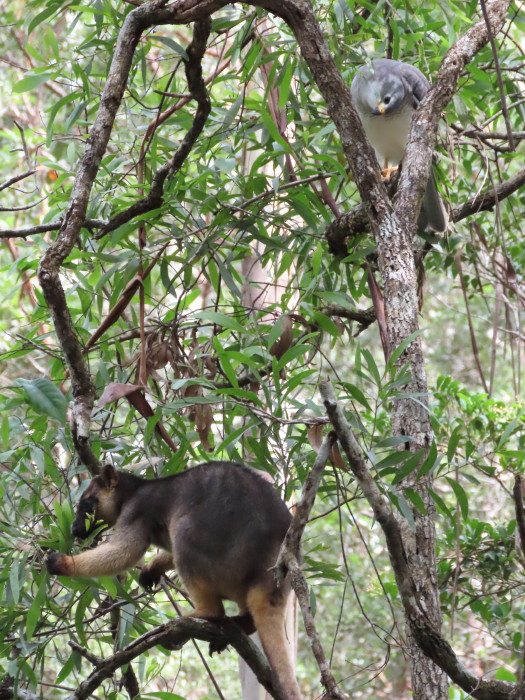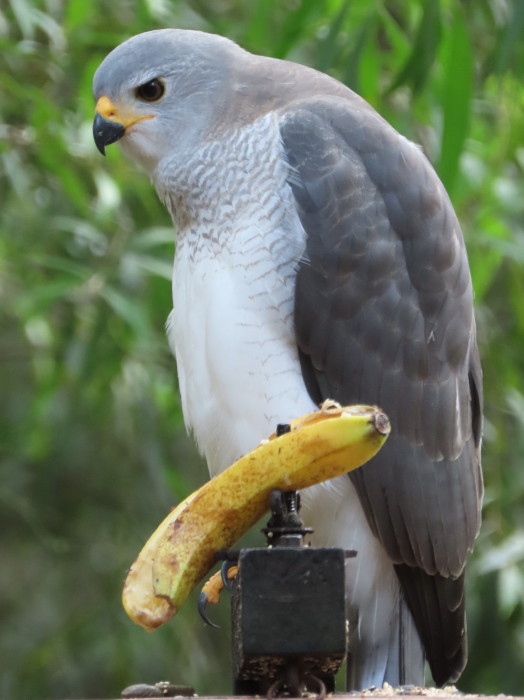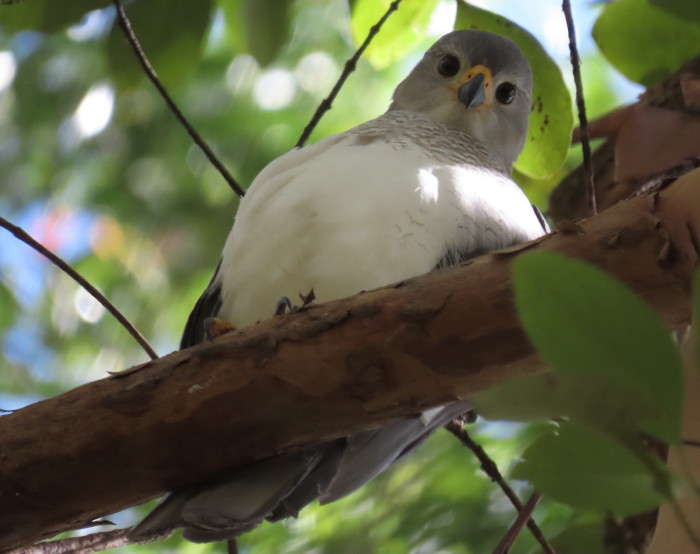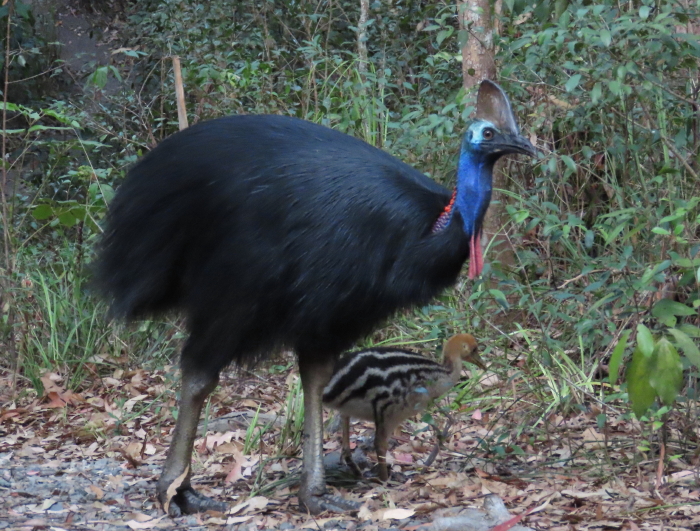
Last seen in February, our cassowary Dad is now back with 3 tiny chicks. They might even be only a few days old!
Dad is doing his best to keep them close to him, but one managed to get separated from the group and only rejoined them a couple of hours later.


They rest often, and Dad nods off every now and then,




The chicks are very cute, but not if you are a finch! They caught a red-browed finch and, after a few attempts, one of the little chicks wolfed it down.
Hey, you’ve got something on your face!






























